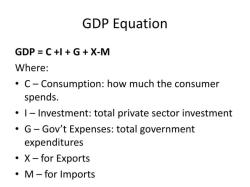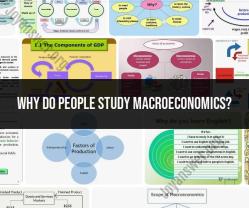What is microeconomics study?
Microeconomics is the branch of economics that focuses on the behavior of individual agents and entities within an economic system. It examines the economic decisions made by individuals, households, firms, and industries and how these decisions impact the allocation of resources, prices, and the distribution of goods and services in the market. In essence, microeconomics seeks to understand the economic choices and interactions of small economic units.
Key concepts and topics within microeconomics include:
Supply and Demand: Microeconomics analyzes the interaction between the supply of goods and services by producers and the demand for those goods and services by consumers. The equilibrium point where supply equals demand determines the market price.
Consumer Behavior: Microeconomics studies how individuals and households make decisions regarding consumption. This involves analyzing factors such as preferences, utility, budget constraints, and the concept of marginal utility.
Producer Behavior: Examining the decisions made by firms and producers, microeconomics delves into topics like production costs, profit maximization, and the factors that influence a firm's output decisions.
Market Structures: Microeconomics explores different market structures, such as perfect competition, monopoly, oligopoly, and monopolistic competition. Each structure has its own set of characteristics and influences how prices are determined in the market.
Elasticity: This concept measures how sensitive the quantity demanded or supplied is to changes in price or income. Elasticity helps understand how consumers and producers respond to changes in market conditions.
Factor Markets: Microeconomics examines the markets for factors of production, including labor, capital, and land. This involves analyzing wages, interest rates, and rents.
Market Failures: Microeconomics also addresses situations where markets may not allocate resources efficiently. Market failures can arise due to externalities, imperfect information, public goods, and other factors.
Government Intervention: Microeconomics investigates the role of government in the economy, including how government policies, regulations, and taxes impact individual behavior and market outcomes.
By studying these aspects, microeconomics provides a framework for understanding the functioning of individual markets and the overall allocation of resources in an economy. It serves as a foundation for analyzing economic decision-making at the micro-level, helping to explain the behavior of consumers and producers and guiding policymakers in crafting effective economic policies.
Microeconomics: Examining the Nuts and Bolts of the Economy
Let's delve into the fascinating world of microeconomics!
What does the study of microeconomics entail?
Microeconomics zooms in on the behavior of individual actors in the economy, such as consumers, businesses, and market participants. It focuses on their decision-making processes regarding:
- Resource allocation: How scarce resources like land, labor, and capital are allocated for production and consumption.
- Prices and production: How prices are determined in individual markets and how firms optimize production decisions.
- Market interactions: How buyers and sellers interact in specific markets and how these interactions affect market outcomes.
Microeconomics uses models, theories, and data analysis to understand these decisions and their consequences.
2. How does microeconomics differ from macroeconomics?
While microeconomics focuses on individual actors and specific markets, macroeconomics takes a broader perspective, looking at the economy as a whole. It examines issues like:
- Economic growth: Factors affecting the overall size and productivity of the economy.
- Unemployment and inflation: Understanding the causes and consequences of these macroeconomic phenomena.
- Government policies: Analyzing the impact of fiscal and monetary policies on the economy.
In essence, microeconomics is the building block, providing the foundation for understanding how individual decisions translate into larger economic phenomena studied by macroeconomics.
What are the primary topics covered in the field of microeconomics?
Some key microeconomic topics include:
- Supply and demand: Understanding how market forces determine prices and quantities of goods and services.
- Market structures: Analyzing different types of markets, such as perfect competition, monopoly, and oligopoly, and their implications for efficiency and consumer welfare.
- Firm behavior: Examining how firms make decisions about production, pricing, and investment under different market conditions.
- Game theory: Modeling strategic interactions between firms and individuals in market settings.
- Behavioral economics: Incorporating insights from psychology to understand how human biases and limitations affect economic decisions.
How do microeconomic principles apply to real-world economic decisions?
Microeconomic principles are applied in numerous real-world contexts, such as:
- Business decisions: Firms utilize microeconomic analysis to set prices, optimize production, and evaluate market entry strategies.
- Government policy: Policymakers use microeconomic models to assess the impact of taxes, regulations, and trade policies.
- Consumer behavior: Understanding how consumers make purchasing decisions helps businesses develop effective marketing strategies.
- Resource allocation: Microeconomic principles can inform decisions about efficient allocation of resources in areas like healthcare, education, and environmental protection.
Can you outline the significance of studying microeconomics in broader economic understanding?
Studying microeconomics provides crucial insights into the fundamental workings of the economy. It equips individuals with the tools to:
- Make informed economic decisions: Understanding the forces influencing prices, market trends, and resource allocation can help individuals make better choices as consumers, investors, and entrepreneurs.
- Evaluate economic policies: Analyzing the potential consequences of government policies on specific markets and individual actors allows for more informed evaluation of their effectiveness.
- Contribute to informed public discourse: By understanding the basic principles of supply and demand, market competition, and resource allocation, individuals can participate more effectively in discussions about economic issues.
Overall, microeconomics offers a powerful lens for understanding the complex interactions of individuals and markets within the larger economic system. By delving into this field, you gain valuable knowledge that can empower you to make informed decisions, evaluate policies, and engage in constructive dialogues about economic issues.
I hope this provides a clear overview of microeconomics! Feel free to ask any further questions you may have.













